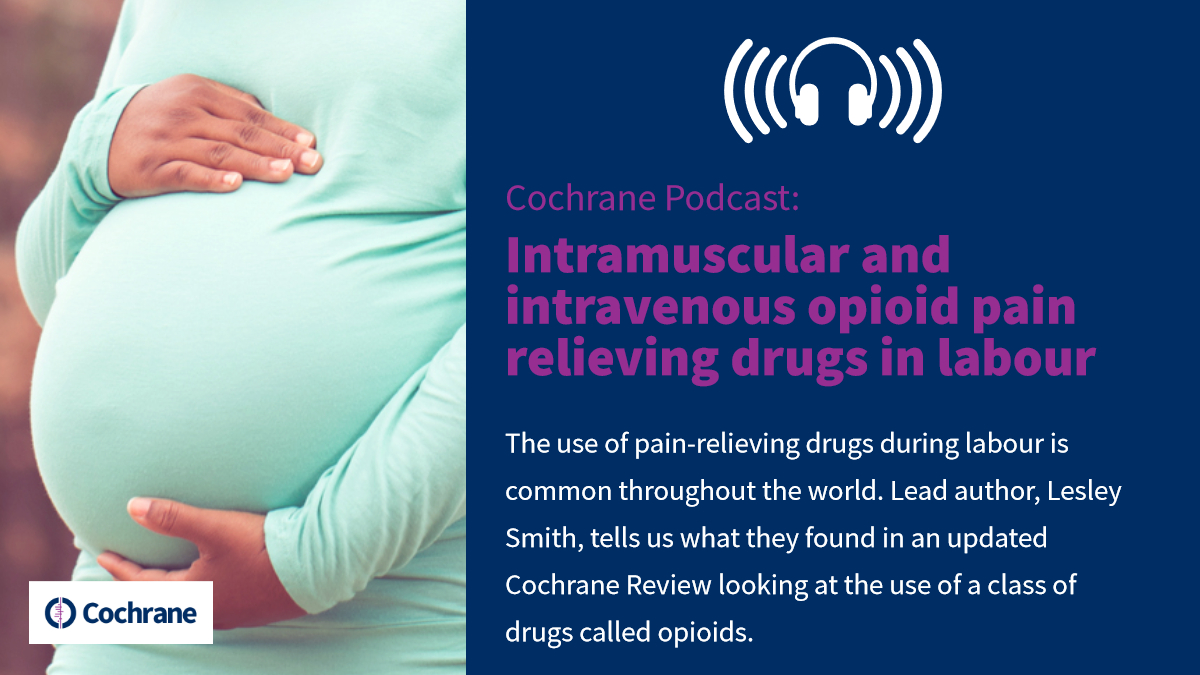
The use of pain-relieving drugs during labour is common throughout the world, and an updated Cochrane Review from June 2018 looks at the use of a class of drugs called opioids. Lead author, Lesley Smith from Oxford Brookes University in the UK tells us what they found.

"For many women in labour, an epidural containing a local anaesthetic has become an increasingly popular choice for pain relief. However, not all women choose this and some give birth in places were an epidural is not available. One of alternatives is the use of an opioid drug, such as pethidine, diamorphine or meptazinol given either intramuscularly or intravenously. These are used less frequently than epidurals but are still widely used in obstetric and midwife-led birth units to relieve pain during labour, and we did this review to satisfy the need for up-to-date information on their effectiveness.
Opioids are known to provide very effective pain relief for various causes of pain, such as that following surgery, but they can cause side effects like nausea and vomiting, and drowsiness. An additional consideration when used for pregnant women, is that they cross the placenta perhaps leading to unintended effects on the baby.
Therefore, despite their widespread use it is still unclear just how effective opioids are at relieving pain during labour, which one provides the best pain relief and what the adverse effects are on the mother and baby. We investigated different types and doses of intramuscular and intravenous opiod drugs to evaluate all this.
We found 61 randomised trials involving more than 8,000 healthy pregnant women. Unfortunately, despite this large body of evidence, few trials had compared the same drug with a control and, instead, we were faced with a total of 34 different drug comparisons. Many comparisons had just a single study providing data, which seriously limited our ability to make firm conclusions. Another problem was that the trials were generally of poor quality, due to relatively small sample sizes, subjective outcome assessment using measures of uncertain validity and reliability, and a lack of blinding of investigators and women.
Overall, we found that intramuscular or intravenous opioids provided some pain relief and women were moderately satisfied with the pain relief during labour, although up to two thirds of women reported moderate or severe pain or poor pain relief one to two hours after receiving an injection. Some women also experienced nausea, vomiting and drowsiness, but there was no clear evidence of adverse effects on the baby. It also wasn’t possible to establish whether one drug was superior to another, because of the lack of the necessary comparative evidence.
In summary, our updated review shows that the evidence supporting the choice of intramuscular or intravenous opioids for pain management during labour is poor. We still need research to establish which drug provides the greatest satisfaction to women, with acceptable levels of unintended effects on both them and the newborn."
- Read the Cochrane Review
- Listen to the podcast in Simplified Chinese
- Listen to more Cochrane Podcasts
- Get Cochrane Podcasts on iTunes
- Visit the Cochrane Pregnancy and Childbirth website

